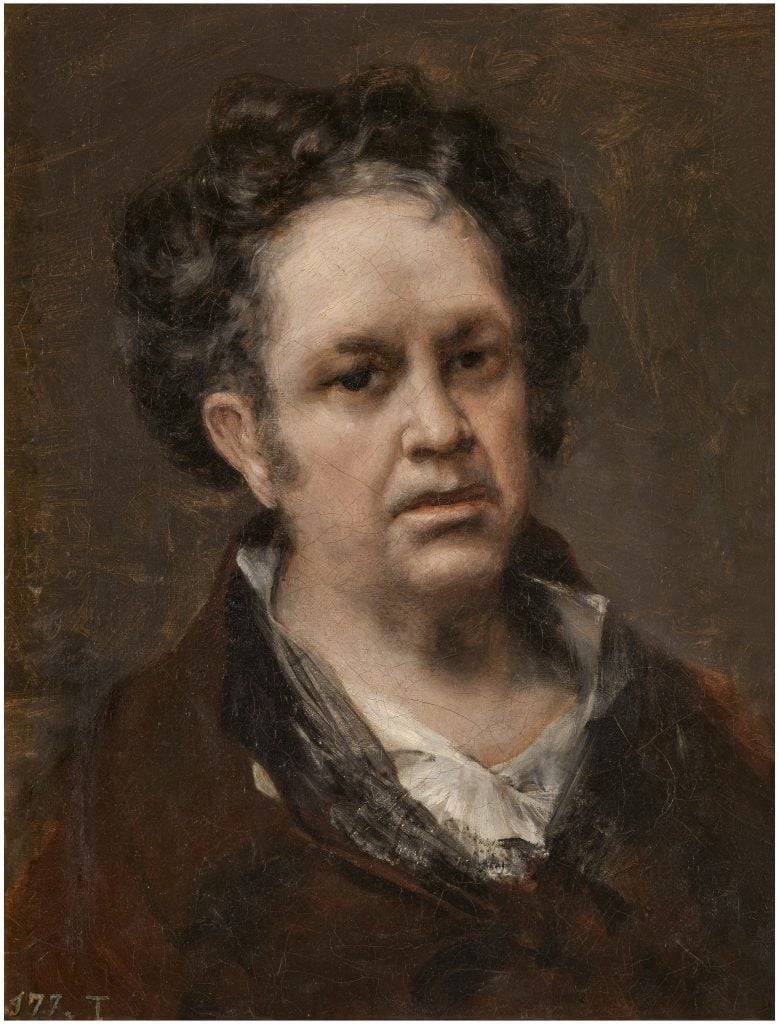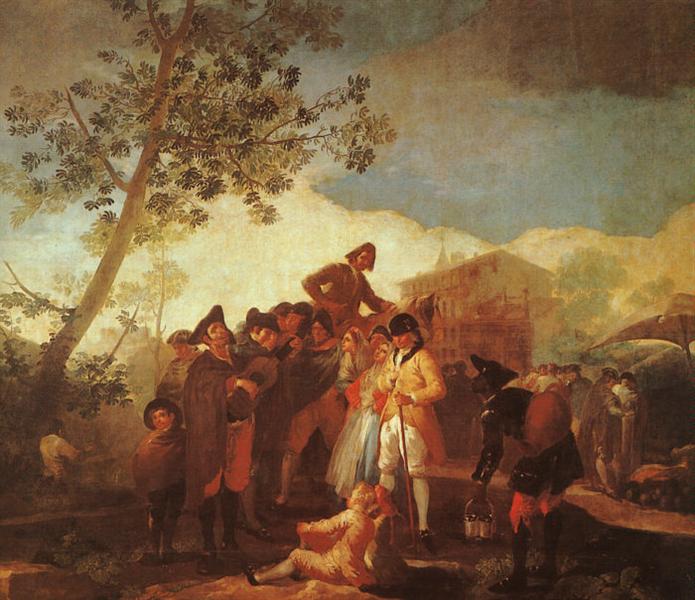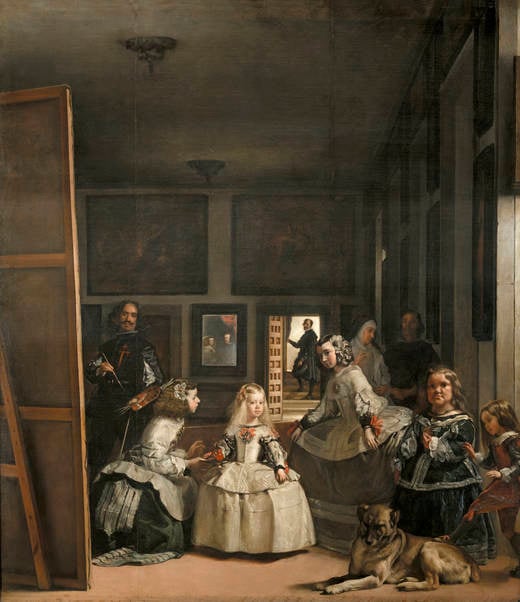Books
In 1776, Young Francisco Goya Set Out to Make Copies of Diego Velázquez’s Work—and It Etched Itself Into His Style Forever
Read an excerpt from the new book "Goya: A Portrait of the Artist."

Read an excerpt from the new book "Goya: A Portrait of the Artist."

Janis Tomlinson

At the end of the 18th century, the painter Antonio Ponz lamented that the masterpieces in the Spanish royal collection were too inaccessible: “Few have any idea of what they are because they have barely seen one miserable print of some of them.” That should change, he wrote, now that Spain had produced such talents as Francisco Goya, who was more than capable of reproducing the magnificent works. Goya took up the cause and set out to copy the masterpieces of one artist he admired in particular, the former lead painter in the court of King Philip IV, Diego Velázquez.
In a world where high-quality digital reproductions of masterpieces are only a click away, it is hard to imagine Goya’s encounter with the paintings of Velázquez, dispersed in the royal palace among the king’s dining room, conversation room, and dressing room; the queen’s salon; and the salon of the prince and princess of Asturias. What did he see by available daylight, perhaps supplemented by oil lamps or candlelight, as he scrutinized the subtlety of Velázquez’s naturalism of light and shadow? It was here that he drew, before going to a studio with a printing press, where he dampened the preparatory drawing, placed it facedown on the etching plate, and put it through a press to transfer the design (in reverse) to a copper plate covered with an acid-resistant ground. The transferred image served as a guide for his etching needle, which scratched through the ground to expose the metal plate beneath. Acid was applied to the surface, to etch, or “bite,” the exposed lines, the acid-resistant ground removed, and the plate inked, its surface wiped clean so that ink remained only in the bitten lines. After printing a preliminary impression (or working proof ), Goya perhaps decided to add other touches to the plate, sometimes using drypoint to scratch directly into the surface rather than repeat the etching process. Each step offered an opportunity for variations to enter: the result, as many have noted, is that Goya’s etchings after Velázquez are less copies than they are translations. Did Goya even believe it was possible to reproduce the brushwork and subtle tones of Velázquez in the linear medium of etching? Perhaps not. What he did convey was character, gestures, expressions, the play of light and shadow, and, in the landscape backgrounds, aerial perspective: together, the essential components of Velázquez’s “natural style,” which from this point forward he claimed as his own.
His initiative found its rewards. In opening the eighth volume of the [book] Viaje, published in 1778 and dedicated to Extremadura, Ponz provided an update on his discussion of masterpieces in the royal palace: “Another laudable enterprise that must be mentioned . . . is that undertaken by don Francisco Goya, professor of painting: he has proposed etching the important works of don Diego Velázquez found in the collection of the Royal Palace, and certainly has made us see his ability, intelligence, and zeal in serving the nation, for which lovers of Velázquez and of painting must be indebted.” Lovers of painting and of Velázquez indebted to him! The praise undoubtedly resounded in Goya’s mind. How might he have reacted had he been aware of his first international mention, included in an undated memorandum sent by P.P. Giusti, the Viennese envoy to Madrid, to the Austrian grand chancellor? With it, Giusti enclosed eight of Goya’s etchings after Velázquez and auspiciously noted, “If their author, who is not an engraver but a painter, and who began by attempting the manner of printing [i.e., etching] continues to improve and is inspired to continue this work, it will be a considerable achievement in the Domain of the Arts.”

Francisco Goya, The Blind Guitar Player (ca. 1778).
Goya’s project after Velázquez might also have introduced him to José Moñino y Redondo, who would play a significant role in his career over the next five years. Appointed to the court judiciary at the age of 35, Moñino championed regalist positions, often in confrontation with the Catholic Church. In 1772 Carlos III appointed him interim plenipotentiary to the Vatican, where he negotiated with Pope Clement XIV the suppression of the Jesuit order, achieved in July 1773; this earned Moñino the title of Count of Floridablanca. In 1776 he returned from Rome to assume his role as secretary of state, and his many responsibilities encompassed the oversight of royal academies, including the Royal Academy of Fine Arts of San Fernando, where Antonio Ponz now served as secretary. According to one early account, one of Floridablanca’s earliest initiatives was to commission prints after the paintings in the royal collection, but the project had to be suspended for financial reasons. Whether or not Goya’s prints were officially commissioned, Floridablanca’s benediction would justify both his undertaking and that of José del Castillo, who advertised two etchings after paintings by Luca Giordano in the king’s oratory of the palace of the Buen Retiro in the Gaceta de Madrid on January 19, 1779. The secretary’s support might also explain how Goya, without rank as a court painter, entered the rooms in the royal palace to select and study the paintings of the master.
If Goya’s veneration of Velázquez, noted by his son in an early biography of the artist, began with the close study essential to translating painting into etching, other works soon betrayed the master’s influence. Velázquez lurks behind The Blind Guitarist, a large tapestry cartoon delivered to the factory three months before the first etchings were offered for sale. Intended as an introduction to the diverse characters at the annual fair of Madrid, it presents them gathered to listen to a blind man singing a ballad of recent news. Young women, a stylishly dressed foreigner with hand in waistcoat, two women in working-class dress, and two boys stand out in front of a crowd of men wrapped in their brown capes; behind them, a man on horseback has stopped to listen. Subtle highlights distinguish the faces of the men in the crowd, but the contours of their capes fall into shadow, as Goya had emulated the somber tones within shadow of Velázquez’s Triumph of Bacchus. Behind the crowd and silhouetted against the sky, the rider’s broadly painted face, with one side illuminated and the other in shadow, pays tribute to the figure standing in the background doorway of Las Meninas.

Diego Velázquez, Las Meninas (circa 1656). Photo: courtesy Museo Nacional del Prado.
Not everyone appreciated Goya’s newfound subtlety, and weavers at the tapestry factory soon demanded that the artist clarify his forms to facilitate their translation into weave. By [court architect Francesco] Sabatini’s order, Goya requested the return of The Blind Guitarist in October 1778, as explained in a memo by the factory’s director, Cornelius Vandergoten: “This painting, by order of Sr. Don Francisco Savatini [sic], was delivered to Don Francisco Goya, who had painted it, to correct and finish that which was indicated and made it impossible to copy in tapestry, for which reason it should not be missed.” Goya did as told, and even today traces of white lines defining the borders of dark capes are visible in the cartoon. Perhaps because of this delay, the tapestry after The Blind Guitarist was installed in a room other than that for which it was conceived, placed among unrelated scenes of country pastimes. But Goya now knew that prints could document original invention and, working on the largest plate he would ever etch, recorded what is presumably the original composition of The Blind Guitarist in an etching that survives only in rare impressions.
Sabatini’s intervention in the matter of The Blind Guitarist did not dampen his enthusiasm for Goya’s works, and when he visited Goya’s studio in December, he “pounced on some good sketches” that Goya had set aside for [his friend Martín] Zapater. With his stock of tapestry sketches depleted, Goya could offer his friend only the “old one of the dance” to be put in a corner, as previously mentioned. He also sent Zapater prints after Velázquez, promising others as they were published, and mentioned in passing the “troubles” he had with them, offering no further details. Grumpily, he signed off: “Go to hell for your making me talk more than if it was about something that mattered.” He undoubtedly had much on his mind: two more etchings after Velázquez were announced for sale later that month; The Blind Guitarist was possibly still in his studio awaiting correction; and he had yet to finish the remaining cartoons for the El Pardo bedchamber. Making things worse, [Goya’s wife] Josefa had just recovered from the miscarriage of a boy almost brought to term, leading Manuel to write to Zapater that Goya could take comfort that the “others” were well.
Fulfilling the adage that darkness precedes the dawn, a month later, Goya breathlessly reported to Zapater his sudden change in fortune:
If I were more calm I would tell you how the king the prince and the princess honored me, for by the grace of God I had the opportunity to show them four paintings, and I kissed their hands I have never had such good fortune, and I tell you that I couldn’t ask for more so far as their liking my works, judging from the pleasure they took in seeing them and the compliments I received from the king and even more from their Highnesses. And what is more with all dignity thanks to God, that neither I nor my works deserved what I received.
Goya had delivered six scenes of the fair of Madrid to the tapestry factory four days earlier. In them, he expands the diverse cast introduced in The Blind Guitarist, as members of classes high and low buy, sell, and bargain in and around the Plaza de la Cebada (Barley Square), with the dome of the church of San Francisco el Grande, recently renovated by Sabatini, prominent in the background.
Excerpted from Goya: A Portrait of the Artist by Janis Tomlinson. Copyright © 2020 by Janis A. Tomlinson. Reprinted by permission of Princeton University Press.